Complete Koyasan GuideEtiquette & Spots to 120% Enjoy the Sacred Celestial Sanctuary and Esoteric Culture
Table of Contents
Welcome to Koyasan, the Religious City Above the Clouds
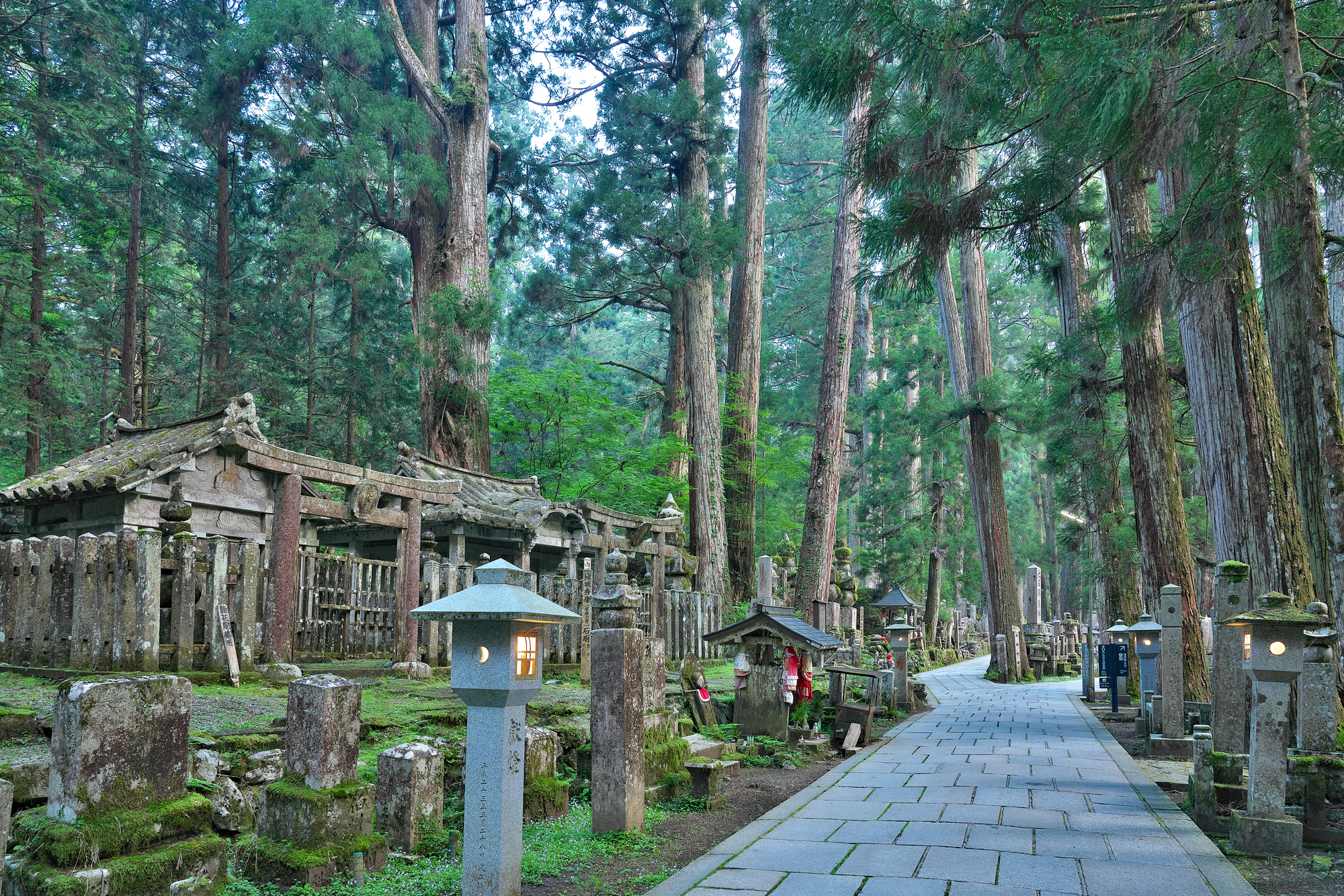
Sprawling atop a mountain plateau at an elevation of about 800 meters is Koyasan, a religious city enveloped in tranquility and faith. Founded over 1,200 years ago by Kobo Daishi Kukai, this site is a major sacred ground of Japanese Buddhism, where the teachings of Shingon Esoteric Buddhism are still passed down today. Magnificent temples stand amidst dense cedar groves, and the mystical Okunoin cemetery is lined with over 200,000 tombstones. Koyasan detaches the visitor's mind from daily life and invites them into a deep spiritual world.
This guide does more than just introduce the solemn temples and historic sites of Koyasan. It aims to convey the profound historical background and Esoteric Buddhist culture that make Koyasan such a sacred place, and to help you acquire the appropriate conduct and mindset for visiting this celestial sanctuary. A deep understanding of the unique etiquette, which sets this place apart from other tourist destinations, is the key to enhancing the quality of your journey manifold.
The sound of the wind blowing through the cedars of Okunoin, the atmosphere of a temple hall resonating with Shomyo (Buddhist chanting), and the subtle flavors of Shojin Ryori (vegetarian Buddhist cuisine) served at a Shukubo (temple lodging). All of these are connected to the teachings of Kobo Daishi and a 1,200-year history of prayer. Now, let's calm our minds and begin a special journey to Koyasan to experience a space of prayer that transcends time and space.
1.The Utopia of Kobo Daishi: The History and Esoteric Culture of Koyasan
The unique atmosphere of Koyasan has been shaped by the teachings of Kobo Daishi Kukai and 1,200 years of human prayer.
1-1. A Celestial Sanctuary Opened by Kukai: 1,200 Years of History
The history of Koyasan began in 816, in the early Heian period, when Kobo Daishi Kukai was granted this land by Emperor Saga to establish a training monastery for Shingon Esoteric Buddhism. Kukai considered this basin, surrounded by steep mountains and isolated from the secular world, to be a topography "like an open lotus flower," the ideal utopia for Esoteric Buddhism.
Since then, Koyasan has attracted faith from all classes of people, from the imperial family and aristocrats to warlords and commoners. In particular, warlords of the Sengoku period (Warring States period) erected tombstones and memorial towers on Koyasan to pray for the souls of the war dead, regardless of whether they were friend or foe. This is the origin of the daimyo (feudal lord) cemeteries seen in Okunoin today. In 2004, it was registered as a UNESCO World Heritage site as part of the "Sacred Sites and Pilgrimage Routes in the Kii Mountain Range," and its universal value was recognized worldwide.
1-2. Danjo Garan and Okunoin: The Meaning of the Two Sacred Sites
The faith of Koyasan is centered around two main sacred sites.
- Danjo Garan: This is the place where Kukai first opened his monastery for Esoteric Buddhism and is said to represent the "Womb Realm Mandala" (Taizokai Mandara) of Koyasan. At its center stands the Konpon Daito (Great Stupa), which enshrines Dainichi Nyorai, the central deity of Shingon Esoteric Buddhism. It is surrounded by important halls such as the Kondo (Main Hall) and the Miedo (Founder's Hall). This is a space that three-dimensionally expresses the teachings of Esoteric Buddhism.
- Okunoin: This is the most sacred place, where Kobo Daishi Kukai is believed to have entered eternal meditation (Gonyujo) and continues to meditate to save people. It is said to represent the "Diamond Realm Mandala" (Kongokai Mandara) of Koyasan. The approximately 2km path from Ichinohashi Bridge to the Gobyō (mausoleum of Kobo Daishi) is lined with over 200,000 tombstones of people from all walks of life, from imperial family members and feudal lords to writers and common people, nestled among cedar trees that are hundreds of years old. This is Japan's largest cemetery, a sacred ground where the souls of all people gather, regardless of sect.
1-3. [2025 Latest] The Coexistence of Faith and Digital Technology Today
Koyasan, which has preserved its 1,200-year tradition, is not untouched by modern technology. In recent years, free Wi-Fi has been installed in major temples within Koyasan, and multilingual tourist apps have been developed. This allows international visitors to deepen their understanding of the history of each hall and the meaning of the Buddhist statues in their own language while visiting.
Furthermore, online reservations for Shukubo (temple lodgings) have become common, making it easy to book from overseas. In addition to traditional experiences like morning services and sutra copying, some Shukubo have begun to offer programs tailored to modern needs, such as yoga and meditation retreats. The coexistence of tradition and innovation is also one of the charms of today's Koyasan.
2.Travel Preparation and Basic Information: The First Step to a Smart Journey
2-1. Access from Osaka-Namba (Nankai Electric Railway and Cable Car)
The most common and efficient way to access Koyasan from Osaka City is by using the Nankai Electric Railway.
- Route: Take the Limited Express "Koya" from Nankai Namba Station to Gokurakubashi Station (approx. 80 mins). At Gokurakubashi Station, transfer to the Nankai Koyasan Cable Car to Koyasan Station (approx. 5 mins).
- Discount Ticket: Purchasing the "Koyasan-World Heritage Ticket" is highly recommended. It includes a round-trip ticket from Namba Station, a 2-day unlimited ride pass for buses within Koyasan, and discount coupons for admission to facilities and souvenir shops, making it very economical.
- Note: The Limited Express "Koya" is all reserved seating. It's wise to book in advance as it can be fully booked on weekends and during tourist seasons. The steep ascent from the foothill station of Gokurakubashi to the mountaintop station of Koyasan by cable car is also part of the travel experience.
2-2. Getting Around Koyasan: Using the Bus Wisely
The town of Koyasan stretches from east to west, and its main attractions are scattered. Covering everything on foot is time-consuming and tiring.
- Nankai Rinkan Bus: A local bus service operates from Koyasan Station, connecting the main spots within the mountain, such as the Okunoin area and the Danjo Garan area. Make the most of the free ride pass included in the "Koyasan-World Heritage Ticket."
- Bus Tips: You can get a bus timetable at Koyasan Station, major bus stops, and the tourist information center. Be sure to check the time of the last bus in advance, as it varies by season. Buses run every 10-20 minutes during the day, but service is less frequent in the early morning and evening.
2-3. Highlight of the Trip "Shukubo": Notes on Reservation and Stay
If you visit Koyasan, you should definitely experience a stay at a "Shukubo" (temple lodging). Shukubo were originally accommodations for monks and pilgrims, but now they also welcome general tourists.
- Reservation: There are over 50 Shukubo on Koyasan, each with its own history and character. You can book through the official website of the "Koyasan Shukubo Association" or various accommodation booking sites. Choose one that suits your preference, such as one with a beautiful garden or one proud of its Shojin Ryori.
- A Shukubo is Not a Hotel: Unlike a hotel or ryokan, a Shukubo is part of a temple. There are rules such as a curfew (usually around 9 PM) and set bathing times. Participation in the early morning service (Gongyo) is also encouraged. It is required to abide by these rules and spend your time quietly. Approaching it with a mindset of enjoying the inconvenience will lead to a deeper experience.
3.[By Area] Popular Tourist Spots and Etiquette to Know
3-1. Okunoin Area: Conduct in the Most Sacred Place
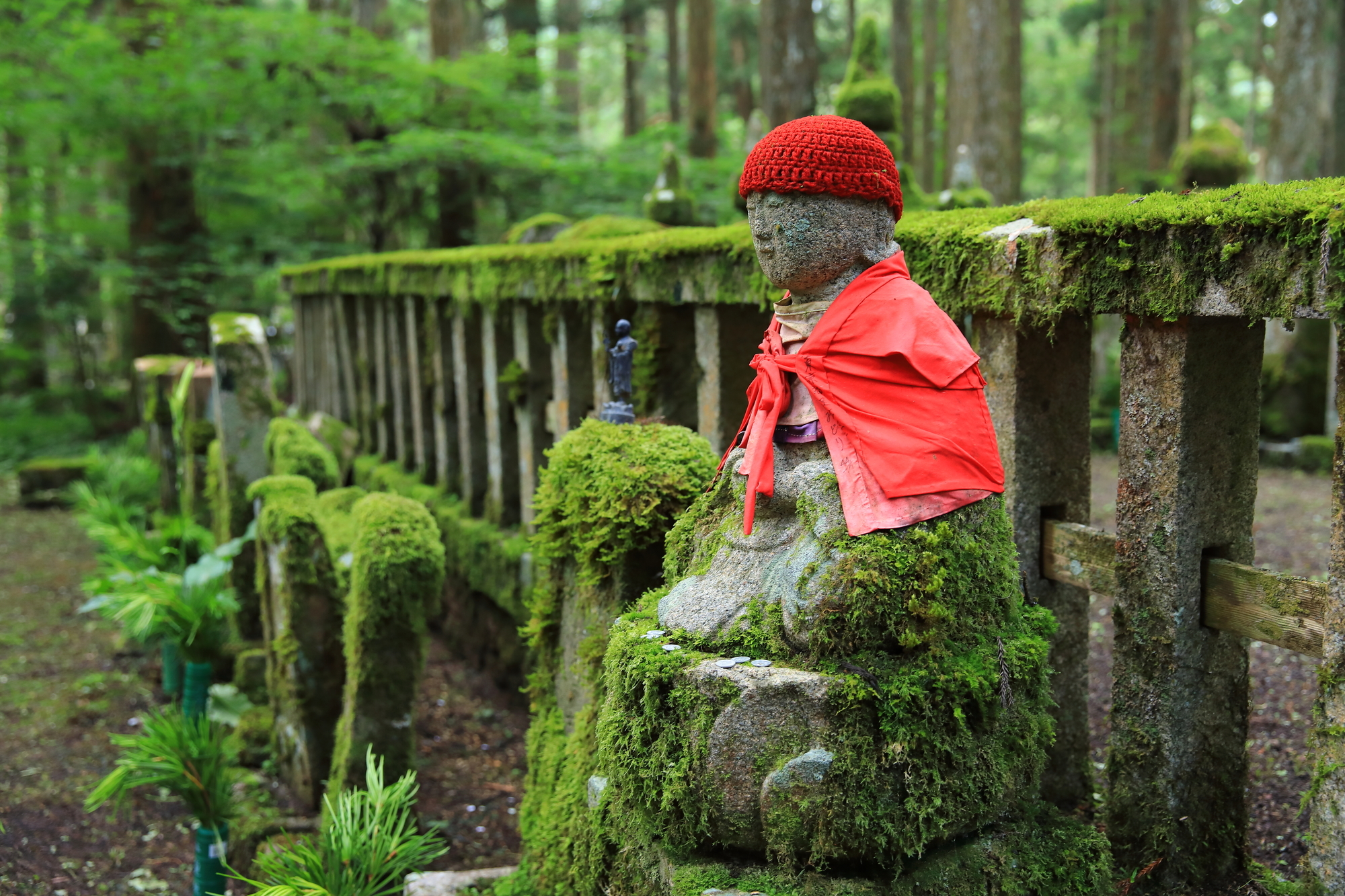
Okunoin is the most sacred place on Koyasan, where Kobo Daishi is believed to be in eternal meditation.
From Ichinohashi Bridge to the Mausoleum: It is proper etiquette to bow with hands clasped in prayer before crossing the "Ichinohashi Bridge," the entrance to the sacred path. From this point on, you are in a sacred area and a cemetery. Loud conversations, eating, drinking, and fooling around should be strictly avoided.
Attire and Footwear: The 2km path is covered by cedar trees and consists of stone pavement and gravel. Comfortable walking shoes are essential, not high heels. It can feel cool even in summer, so it's a good idea to bring an extra layer.
Photography Note: Photography is permitted on the path, but be considerate of other worshipers. In particular, from the Gobyobashi Bridge, which is just before the Mausoleum of Kobo Daishi, photography, recording, eating, drinking, and smoking are strictly prohibited. This is the most sacred place of prayer. Put your cameras and smartphones in your bag and focus on quietly putting your hands together in prayer.
3-2. Danjo Garan Area: Walking Through the World of Esoteric Buddhism
The Danjo Garan is a three-dimensional representation of the world of Esoteric Buddhism as envisioned by Kukai.
Order of Visit: There is no set route, but it is common to first visit the central Konpon Daito and Kondo, and then pay respects at other halls like the Miedo, where Kukai is enshrined.
Manners in the Halls: When entering each hall, take off your hat and pray quietly. The interiors are often dimly lit, which is intended to calm the mind and help you face the principal deity. Flash photography is strictly prohibited to protect the cultural properties.
3-3. Kongobuji Temple Area: Manners at the Head Temple
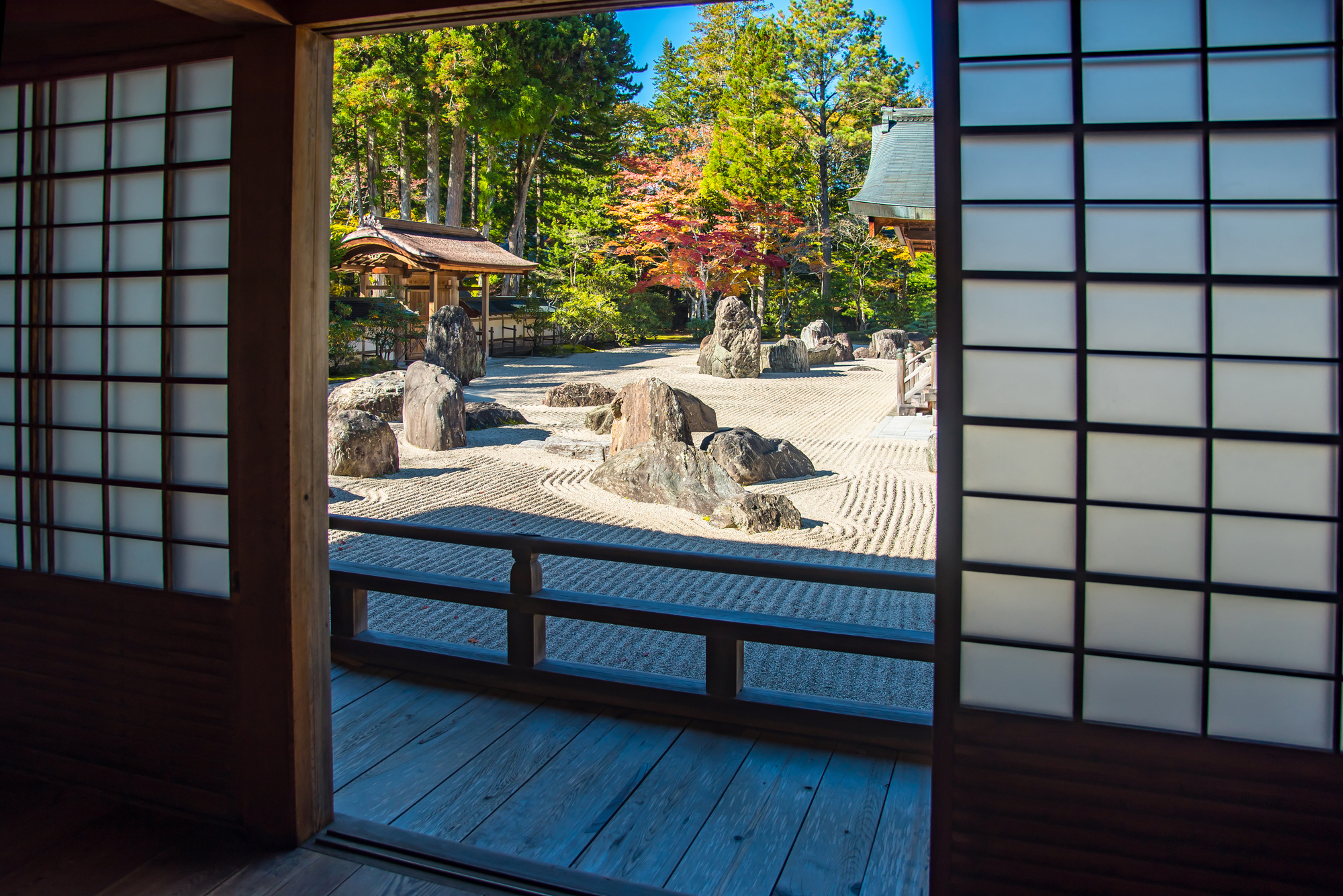
Kongobuji is the head temple of the Koyasan Shingon sect and the central administrative temple of Koyasan.
Respect for the Building: It contains many historically important places, such as magnificent sliding screen paintings by the Kano school artists and the room where Toyotomi Hidetsugu committed suicide. Do not touch the screens or pillars.
Japan's Largest Rock Garden: The Banryutei Garden is Japan's largest rock garden, depicting a pair of dragons protecting the inner sanctuary from a sea of clouds. Sit on the veranda and quietly savor its magnificent worldview.
4.The Essentials! A Themed Guide to Manners for Enjoying Koyasan
4-1. Attire and What to Bring: Preparing for a Pilgrimage to a Sacred Site
Koyasan is a religious city on a mountaintop. It is essential to prepare with the awareness that it is a place of faith as well as a tourist destination.
- Attire: Excessively revealing clothing (such as tank tops or short shorts) is not appropriate for visiting temples. It is advisable to wear something a little more formal, like a collared shirt and long pants, especially when attending morning services or visiting high-ranking temples.
- What to Bring: Comfortable walking shoes are a must due to the many slopes and stairs. It's recommended to bring an extra layer of clothing regardless of the season, as it can get cold in the mornings and evenings even in summer. If you collect Goshuin, don't forget your Goshuin-cho.
4-2. Etiquette at a Shukubo: Mindset for Services, Sutra Copying, and Shojin Ryori
The experience at a Shukubo makes a trip to Koyasan special.
- Morning Service (Gongyo): Participate in the chanting service held early in the morning (usually around 6 AM). Listening to the solemn chanting of the monks and quietly putting your hands together is a soul-cleansing experience. Talking is strictly prohibited.
- Sutra Copying (Shakyo) / Buddha Drawing (Shabutsu): This is the experience of copying scriptures like the Heart Sutra. Concentrating on each character calms the mind and provides a meditative time.
- Shojin Ryori (Buddhist Vegetarian Cuisine): This is a Buddhist meal made with vegetables, grains, and tofu, without meat or fish. The delicate flavors that make the most of the ingredients' natural taste cleanse the body and mind from within. Before eating, let's say grace with hands clasped in gratitude.
4-3. Okunoin Night Tour: How to Spend a Special Time
The Okunoin Night Tour, hosted by some Shukubo and the tourist association, is a popular program where you can experience a mystical atmosphere completely different from the daytime.
- Enjoying the Silence: Quietly listen to the explanations of the monk guide and walk the magical path illuminated only by lanterns. It is required to be even more respectful of the silence and refrain from private conversations than during the day.
- Consideration for Nature: At night, nocturnal animals like giant flying squirrels are active. Do not startle them with loud noises or camera flashes.
4-4. Dining & Shopping: Shojin Ryori and Goma-dofu
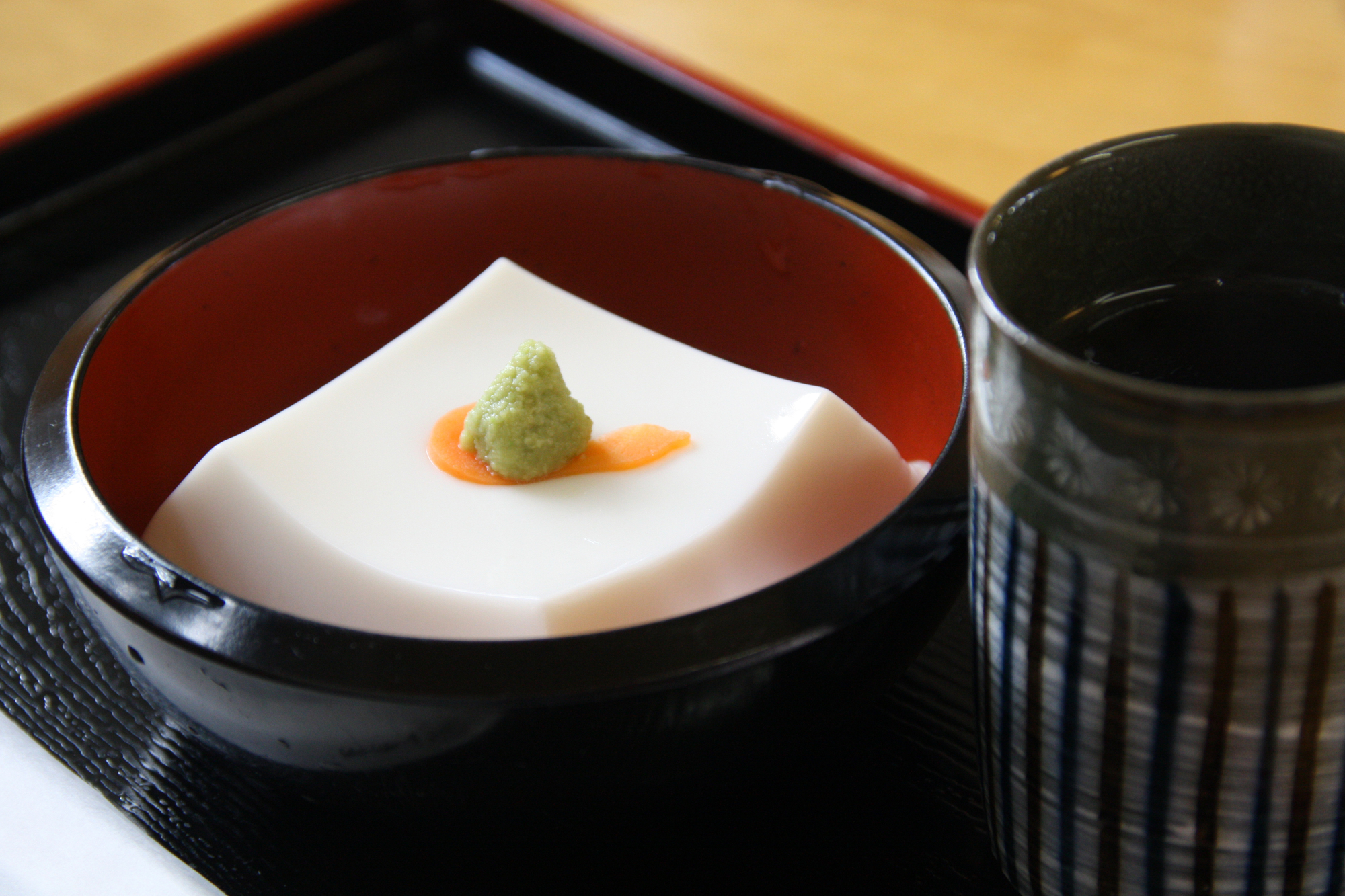
Enjoying Koyasan's unique food culture is also part of the fun.
- Goma-dofu (Sesame Tofu): The specialty of Koyasan is Goma-dofu. There are many specialty shops in town, each with its own flavor and texture. It's a popular souvenir, but be mindful of the expiration date as it is a fresh product.
- Shojin Ryori Restaurants: Even if you don't stay at a Shukubo, several restaurants offer Shojin Ryori for lunch. It's a good opportunity to experience a meal based on Buddhist teachings.
5.Planning Your Trip: Model Courses for Practicing Good Manners
5-1. [Day Trip] A Focused Course on the Two Sacred Sites!
- 9:30 AM: Arrive at Nankai Koyasan Station. Take a bus to "Okunoin-guchi."
- 10:00 AM: Slowly walk the path of Okunoin, viewing the tombstones of historical figures. Bow before the Gobyobashi Bridge and pay respects at the Mausoleum of Kobo Daishi.
- 12:30 PM: Have lunch of Shojin Ryori at a restaurant near the "Okunoin-mae" bus stop.
- 1:30 PM: Take a bus to "Kongobuji-mae." Visit the head temple, Kongobuji.
- 2:30 PM: Head to Danjo Garan. Tour the main halls, such as the Konpon Daito and the Kondo.
- 4:00 PM: Take a bus to Koyasan Station.
- 4:30 PM: Take the cable car and Nankai Electric Railway to head back.
5-2. [1-Night, 2-Day] A Full Course to Deeply Experience Esoteric Culture with a Shukubo Stay
- Day 1: 1:00 PM: Arrive at Koyasan Station. Take a bus to your Shukubo and drop off your luggage. 2:00 PM: Take your time visiting Danjo Garan and Kongobuji Temple. 4:30 PM: Check into your Shukubo. After a short break in your room, wash off the day's sweat in the large bath. 6:00 PM: Enjoy a Shojin Ryori dinner at the Shukubo. 7:30 PM: If you wish, participate in the Okunoin Night Tour.
- Day 2: 6:00 AM: Participate in the morning service. A refreshing start to the day. 7:30 AM: Have a Shojin Ryori breakfast. 9:00 AM: After checking out, leave your luggage and head to Okunoin. Walk the path again in the bright daylight and pay respects at the mausoleum. 11:30 AM: Admire national treasure-class Buddhist statues and paintings at the Reihokan Museum. 1:00 PM: Have lunch at a cafe or restaurant in town. Try some Goma-dofu. 2:30 PM: Look for souvenirs while heading to Koyasan Station by bus. 3:30 PM: Head back.
A Journey with Kobo Daishi
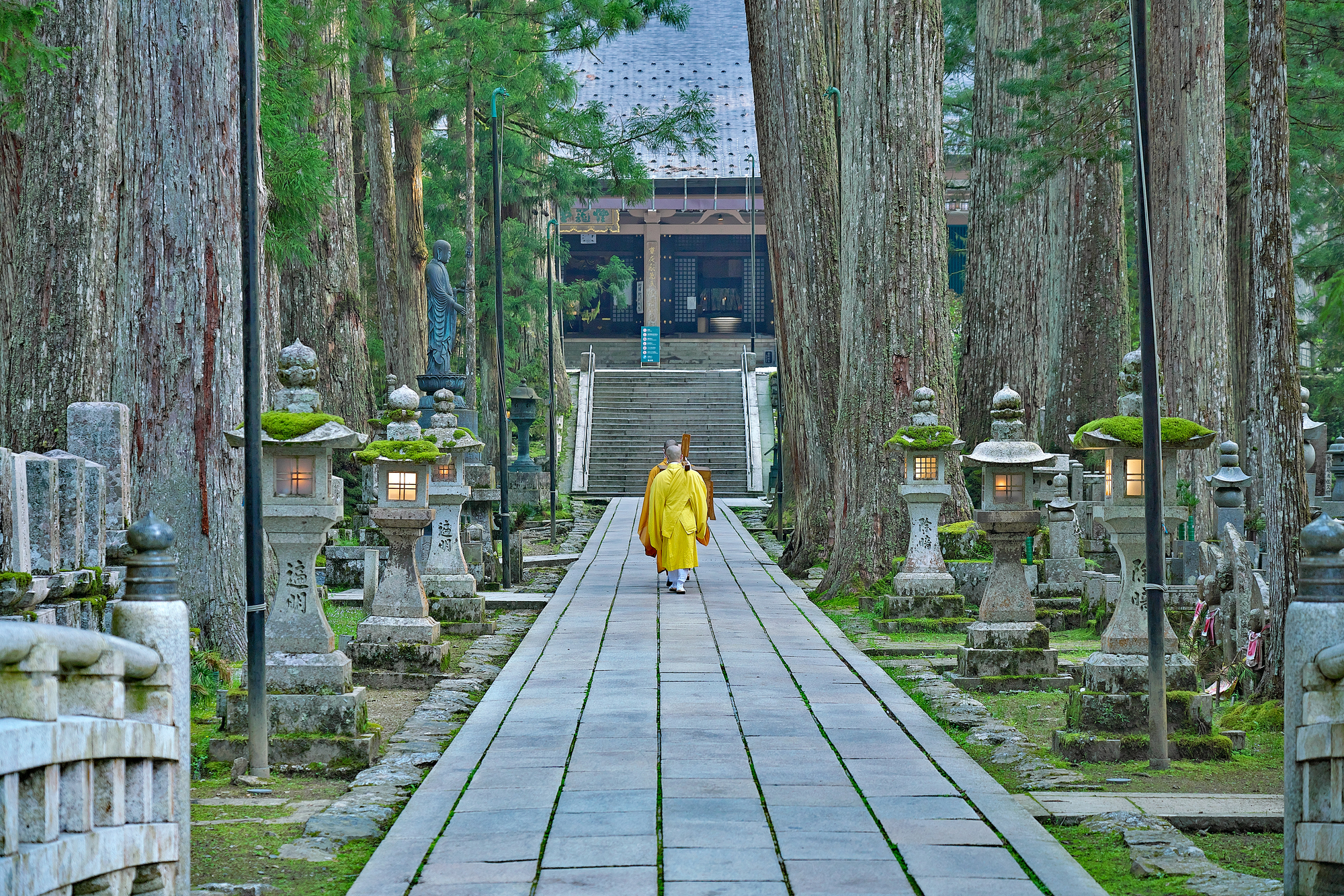
A stay on Koyasan is more than just a sightseeing trip; it is an experience akin to a "pilgrimage," where you confront yourself and converse with history. The etiquette and manners introduced in this guide are not strict rules but expressions of respect for the 1,200-year history of prayer and for the people who continue their training there today. By understanding this spirit, the silence of Koyasan will resonate more deeply in your heart, and what you may hear is the echo of "Namu Daishi Henjo Kongo," a chant of gratitude to Kobo Daishi. May this celestial sanctuary light a gentle flame in your heart.

